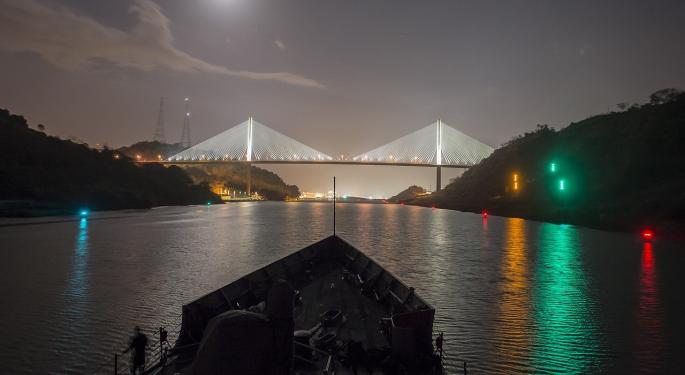As many may be aware, the Panama Canal is being expanded to double its capacity. The construction has been on track since 2007, scheduled for completion in 2016.
The new canal will be able to support:
- Container ships up 13,000 twenty-foot equivalent units (or TEUs), up from roughly 5,000 TEUs.
- Bulk commodity ships like gas carriers, tankers and dry bulk, up to 120,000 deadweight tons (DWT), up from approximately 80,000 DWT.
In a report issued Thursday, Credit Suisse analyst Gregory Lewis and his team looked into the expansion project and share some key takeaways.
According to the note, while the expansion of the Panama Canal “will provide ripples across the maritime sector,” the experts expect to see the biggest changes in the container ships and gas sectors. In fact, they noted, ports in the U.S. Gulf and East Coast are preparing themselves, and have already spent more than $3 billion on infrastructure expansion, hoping to handle more capacity going forward.
Moreover, they remarked, the expansion should help better connect Asia with the Americas, and the West Coast of South America with Europe.
The Biggest Winner
One obvious question regarding the expansion project is: who’s benefiting?
The analysts at Credit Suisse looked back at the beginning of the venture. When expansion started in 2007, the North American shale revolution had not even began. However, they assured that North American natural gas seems to be posed to benefit the most.
“NAM natural gas production growth (4 percent CAGR last 10 years) has been so robust that the U.S. will start to export LNG next year,” the experts expounded, adding this was inconceivable less than 10 years ago.
“The Panama Canal Authority (ACP) estimates that ~80 percent of the world’s LNG fleet should be able to take advantage of the new lock system, reducing trip times from the U.S. Gulf to Asia by a few week,” they continue. “LNG vessels are scheduled to have their own toll regime for the first time, including a ballast toll reduction for round-trip voyages.”
Other Canals
Finally, the analysts looked into the alternatives to the Panama Canal: the Suez Canal and the Nicaragua Canal. The Suez Canal has been expanded recently and stands as an alternative to the Panama Canal. Therefore, the experts think this should help moderate tolls for the movement of containers from the Far East to USEC through the Panama Canal.
On the other hand, the Nicaragua Canal is not only costly, but quite unaviable at the time.
